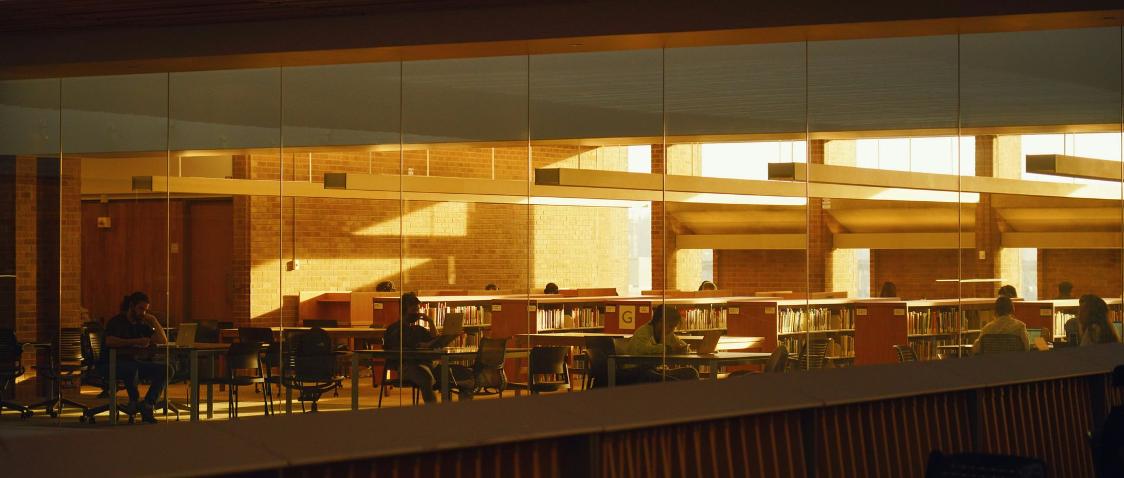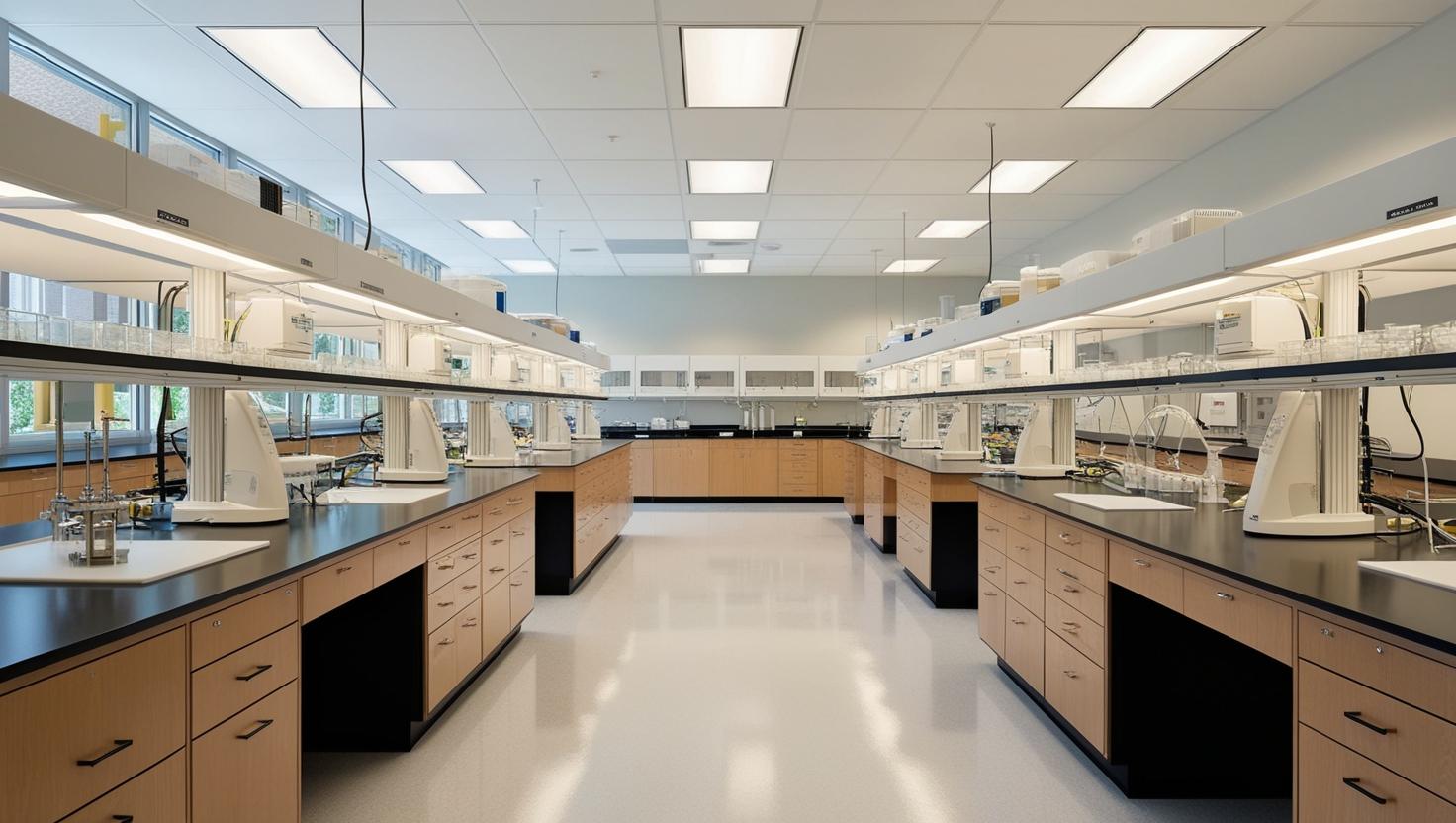Lighting in educational spaces: Light that inspires learning.
How proper lighting improves focus and performance in the classroom.
When we think about education, lighting is rarely the first thing that comes to mind. However, did you know that the type of lighting in classrooms can have a direct impact on student performance and teacher well-being?
Light not only allows us to see, but also influences how we feel, how we learn, and how we interact with our environment. In an ever-evolving educational world where flexibility and innovation are key, proper lighting planning can be a decisive factor in creating spaces that foster learning, creativity, and comfort.
Why is lighting key in educational environments?
Numerous studies have confirmed that proper classroom lighting improves concentration, reduces visual fatigue, and boosts academic performance. But to achieve these benefits, simply installing light fixtures isn't enough. Strategic lighting design is required.
Some key factors to keep in mind:
🔹 Correct color temperature
- To maintain focus and alertness, neutral or slightly cool light (4000K to 5000K) is recommended.
- In rest areas or common spaces, warm light can be used to promote relaxation.
🔹 Uniformity and glare control
- The lighting should be uniform, without distracting shadows or areas with excessive brightness.
- It is recommended to use fixtures with a low UGR index (<19) to avoid glare that can interfere with reading or working on screens.
🔹 Color Rendering Index (CRI)
- A high CRI (>80) ensures that colors are perceived naturally, which is important in environments where visual or graphic material is used.
🔹 Energy efficiency
- Considering low-energy LED fixtures with dimming and automation capabilities (motion sensors, DALI control, etc.) contributes to energy savings and the building's sustainability.
Regulations and standards: what you need to know
In educational projects, complying with current regulations is as important as the design. Here are some key guidelines to keep in mind:
Minimum illumination levels (lux)
According to the UNE-EN 12464-1 standard, the recommended minimum levels are:
General classrooms: 300–500 lux.
Laboratories: 500 lux.
Libraries (reading areas): 500 lux.
Corridors: 100–200 lux.
UGR (Unified Glare Rating)
The recommended UGR value for classrooms and educational spaces should be below 19 to avoid eye strain and discomfort from glare.
Maintenance and durability
In educational institutions, durability and low maintenance are key. It is recommended to use fixtures with a long lifespan (>50,000 hours) and durable materials.
Sustainability certifications
If the project aims for certifications like LEED or BREEAM, choosing efficient lighting systems is a key component in the scoring.
Lighting design: from functional to emotional.
Lighting not only serves a technical function, but it can also be a pedagogical and emotional tool. Some examples of its strategic application in educational spaces:
Collaborative work areas: adjustable lighting that adapts to different dynamics.
Hallways and transition areas: softer light, with design that enhances orientation.
Common or creative spaces: dynamic or accent lighting that stimulates imagination.
Sensory or inclusive classrooms: a combination of color temperatures and intensity control to adapt to different student profiles.
Psychological impact of light on students
Proper lighting has a significant impact on students' well-being and performance. Natural light, for example, improves mood and helps regulate the circadian rhythm, promoting better rest and increased alertness during the day.
🔹 Warm light vs. cool light
In classrooms, cool light (4000K-5000K) is the most effective option for improving concentration, as it helps reduce eye strain and promotes focus. On the other hand, in rest areas or common spaces, warm light encourages relaxation, which is key for reducing stress and fostering creativity.
🔹 Smart lighting and well-being
Smart lighting also plays a crucial role by allowing the adjustment of light intensity based on the activity being performed. This ability to adapt the lighting not only optimizes academic performance but also helps create a more comfortable and healthy environment for both students and teachers.
Custom solutions based on the type of educational space
Each area within an educational environment has specific lighting needs. From classrooms to auditoriums, each space requires a different approach to optimize light and performance.
🔹 Classrooms and laboratories
For classrooms and laboratories, lighting should be uniform and precise. Fixtures with a high CRI (color rendering index) and glare control are ideal for creating a comfortable environment for reading and conducting experiments.
🔹 Libraries and reading rooms
In libraries and reading areas, soft lighting fixtures are needed to prevent eye strain. Dimmable fixtures with indirect light are perfect for creating a relaxing environment suitable for reading.
🔹 Hallways and common areas
Hallways should be effectively lit to ensure safety, while common areas can benefit from decorative fixtures that not only provide lighting but also add style.
🔹 Collaborative spaces
Flexible spaces require adjustable lighting that allows the intensity to be changed based on the activity being performed: from group work to presentations.
Good lighting transforms learning. It goes far beyond just installing lamps: it’s about designing visual experiences that promote knowledge, health, and well-being.
At Onok Lighting, we have been working for years alongside architects, designers, and educational institutions to create more human, functional, and sustainable spaces. We believe in the power of light as an educational agent.
Are you working on an educational project? Let’s light it up together.



